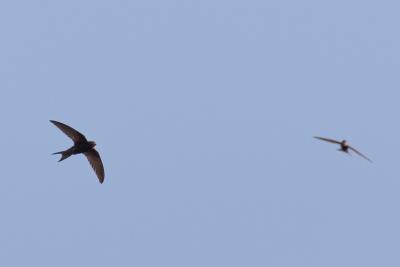Contact
Milo Manica
Main Organisation
Description
On the wings of the swifts "is the census which has the aim to obtain a mapping of the presence of swift colonies on the territory, to then start protection actions. Why paying so much attention on swifts? you may wonder. Swifts are a symbolic species of urban biodiversity: after centuries of coexistence with humans, their habitat is mainly to be found in urban contexts. They are an excellent indicator of the environmental quality in our cities and precious allies in the biological fight against harmful insects.
For these reasons, we have carried out a “citizen science” project on the mapping of swifts in the province of Varese, in order to collect data through the engagement of local inhabitants.
Participation Spectrum
When and Where
Start Year
2022
End Year
2022
Policy Context
Policy Stage
Context of activity
Science or Policy Field
Specific Topic
Research and mapping of the presence of swifts, a species of conservation interest
Participants
Participants
100
Other participants
How were the Participants selected?
Through what means citizens knew about the call for participation?
Media activities, direct contact (newsletter), social media
Methodologies
Events
10
Methodologies used
Methodology description
Citizen science
Tools Used
Spaces Used
Impact
Main Outcomes and Lasting Achievement
100 participants were involved in the citizen science activity, 200 students involved in designing the logo of the process “Sulle ali dei rondoni”, 600 observations of swift nesting sites in the province of Varese. In about two years of activity, the project has involved many citizens and allowed to implement several actions to protect the nests in specific localities, thanks to the intervention of citizens. For example, nesting sites have been protected in Varese, blocking the restoration works of the buildings and saving the present species, and placing artificial nests in public buildings, such as churches.
How were the outcome taken up within the process they were carried out?
A document was drafted and shared with participants during the online meetings. The document explained the objective and the tools that were used during the citizen science activity.
Assessment
Reason for such challenges and solutions
We needed to use a tool that is suitable for different targets, to record accurately information on nests mapping. For this purpose, the creation of an app would have been optimal, but with the difficulties related to the costs of implementation and digital barriers to its use, we haven’t proceeded this way. On the contrary, we have decided to use a traditional field card, suitable for everyone, simple but with precise information. The difficulty was then to record all the field cards on a special file, but the work was carried out successfully, thanks to the involvement of students.
Lessons Learn
Technology helps and is important, but by employing traditional research methods; citizen science activities give the possibility to involve many people and it works well for the census of species over vast territories. Moroever, by involving citizens in the mapping of a species, they get interested on many issues other issues on urban biodiversity
Recommendation
Combine more sophisticated and traditional methods; 2) provide adequate training for the participants involved in the citizen science project; 3) network and collaborate with as many partners as possible
